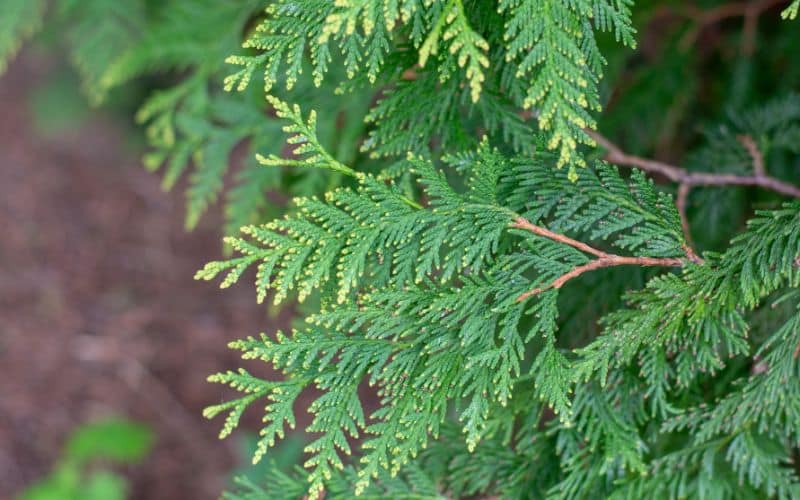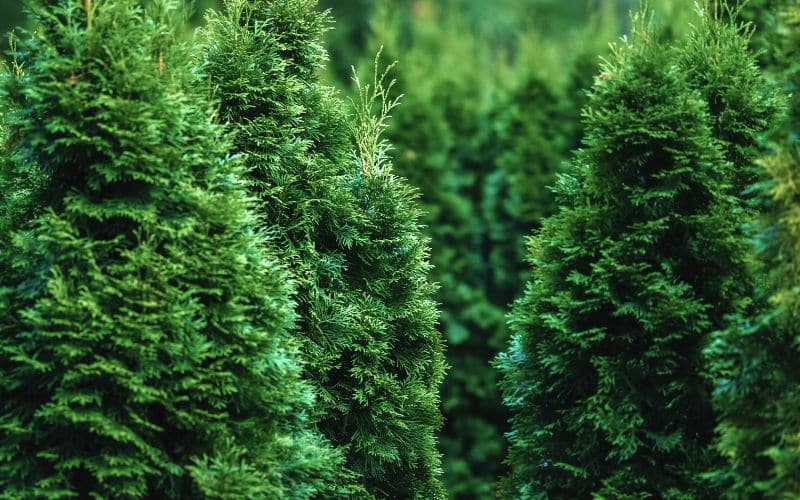
If you’re seeking a unique and durable choice for your next landscaping project, the Eastern White Cedar of Ontario should be at the top of your list. This remarkable tree species offers an array of benefits that make it ideal for various uses in both residential and commercial settings. Known scientifically as Thuja occidentalis, it’s native to North America, specifically the cool temperate forests of Ontario.
The Eastern White Cedar is highly valued due to its resistance to decay and pests, along with its pleasing aesthetics. It’s capable of withstanding harsh Canadian winters while maintaining its beauty – an attribute that lends itself well to creating eye-catching outdoor spaces. Moreover, these cedars grow relatively fast compared to other tree species in Canada, which makes them a sustainable option for many applications.
Your journey towards understanding this fantastic resource begins here! Whether you’re a homeowner looking into enhancing your garden or a business owner planning on improving your premises’ curb appeal – this guide will provide you insights about why Ontario’s Eastern White Cedar is worth considering.
Understanding the Eastern White Cedar
Diving straight into the heart of Ontario’s natural beauty, let’s uncover the secrets of the Eastern White Cedar. Indigenous to Canada, this tree species is a real gem in our landscape.
A close look at this species reveals its exceptional resilience. Known scientifically as Thuja Occidentalis, it can thrive even in harsh conditions and withstand extreme weather changes typical for Canadian climate. Isn’t that something?
Let’s talk about size now – they’re typically 10-20 meters tall with a trunk diameter around 60 centimetres. However, there have been instances where these trees reached up to an impressive 38 meters!
They’ve got quite a lifespan too – some are known to be over 800 years old! That’s almost as long as since William The Conqueror was crowned King of England!
- Typical height: 10-20 metres
- Trunk Diameter: ~60 cm
- Maximum recorded height: ~38 metres
- Longest life span on record: >800 years
Moving onto their aesthetic appeal – their bark has a stringy texture and is reddish-brown while needles are yellow-green turning darker in winter months which adds year-round interest.
But wait – it’s not just about looks or toughness; these cedars also provide excellent timber used for shingles and posts due its resistance against rotting when exposed to moisture.
Benefits of Ontario’s Native Eastern White Cedar
You’re probably familiar with the Eastern White Cedar, a common sight in Ontario. It’s not just an attractive tree; it also has numerous benefits that make it a favourite among gardeners and landscapers. Let’s explore some of these advantages.
Firstly, this native species is known for its impressive longevity. Some specimens have been found to be over 400 years old! This means once you’ve planted an Eastern White Cedar, you can expect it to grace your landscape for generations to come.
Secondly, they are incredibly resilient trees. They thrive even in harsh conditions such as poor soil quality or extreme temperatures – perfect if your garden isn’t exactly fertile ground or if you live in a particularly cold region.
Moreover, their dense foliage provides excellent privacy when used as hedging plants. Your home can become your personal sanctuary away from prying eyes with the help of these cedars’ lush greenery all year round.
Lastly but certainly not least – let’s talk about sustainability! The Eastern white cedar is indigenous to Ontario making them well adapted to local pests and diseases which reduces the need for harmful pesticides or herbicides.
- Longevity: Can live up-to 400 years
- Resilience: Thrives even in poor soil and extreme temperatures
- Privacy: Dense foliage ideal for hedging
- Sustainability: Indigenous tree requires less pesticide use
So next time you consider sprucing up your landscape remember – there’s more than meets the eye when it comes to Ontario’s native eastern white cedar!

Caring for Your Eastern White Cedar in Ontario
Your Eastern White Cedar is a hardy native of Ontario. It’s robust, it’s adaptable and with the right care, it can thrive beautifully in your garden.
So let’s get into how you can ensure its best health. First off, position matters. The cedar prefers full sun to partial shade conditions. Try to choose a spot that’ll offer at least four hours of direct sunlight daily.
Watering is another crucial factor to consider. While the tree can tolerate dry conditions once established, during its initial years it’ll appreciate consistent watering especially during drier months.
Don’t overlook soil requirements either! The cedar isn’t too fussy but thrives best on well-drained soils with neutral or slightly acidic pH levels.
Pruning is an aspect where you’ve got control over your cedar’s shape and size. Although not essential as cedars have naturally symmetrical growth habits, trimming helps maintain desired shapes while removing any dead or diseased branches ensuring overall tree health.
Here are some quick tips:
- Water deeply rather than frequently
- Mulch around the base aids moisture retention
- Regularly inspect for pests like spider mites
Remember, every plant has unique needs – understanding them makes caring simpler!
Eastern White Cedars: Threats and Conservation Efforts
Imagine you’re strolling through a dense Ontario forest, the air thick with the scent of pine. Suddenly, your eye is drawn to an elegant tree with scaly leaves and flaky bark – it’s an Eastern White Cedar. This native Canadian tree species plays a crucial role in our ecosystem but faces numerous threats that jeopardise its existence.
There’s no denying that these trees are under siege from multiple fronts. Firstly, human activities like logging and urbanisation have led to significant habitat loss for these cedars. Invasive species pose another threat as they compete for resources or introduce diseases detrimental to the cedar’s health.
Let’s look at some numbers:
| Year | Population of Eastern White Cedars |
|---|---|
| 2000 | 10 million |
| 2010 | 8 million |
| Table: Decline in population of Eastern White Cedars over ten years. |
It’s not all doom and gloom though! You’ll be glad to hear there are conservation efforts underway aimed at protecting this beloved Canadian icon.
Here are some ongoing initiatives:
- The implementation of sustainable forestry practices reduces habitat destruction.
- Active management strategies control invasive species.
- Reforestation programs aim to restore lost populations by planting new seedlings.
But what can you do? Supporting local conservation organisations helps fund their work while spreading awareness about the plight of our native trees can influence policy changes on their behalf!
The battle isn’t won yet but together we stand a chance at ensuring future generations will still be able enjoy those tranquil walks amidst towering white cedars just as we do today.

Conclusion: The Importance of Preserving Ontario’s Eastern White Cedars
Ontario’s Eastern White Cedars are an integral part of the Canadian landscape. You’ve seen how these trees provide not only natural beauty, but also offer significant environmental benefits. They’re a vital component to our ecosystem and deserve our attention for preservation.
Consider their role in mitigating climate change. These cedars absorb large amounts of carbon dioxide from the atmosphere, acting as effective carbon sinks. We must acknowledge this crucial service they perform for us every day.
Here’s some food for thought:
- Each mature tree can absorb roughly 22 kg of CO2 per year.
- An acre filled with mature white cedars could potentially absorb approximately 10 tons annually.
Isn’t that something?
But it doesn’t stop there; these trees are also home to diverse wildlife species, offering shelter and nourishment to countless birds and insects alike. By preserving them, we’re not just saving trees – we’re safeguarding entire ecosystems!
Unfortunately, deforestation is becoming a rising concern in Ontario due largely to urban development pressures – threatening the existence of these precious cedar forests. Now more than ever before, it becomes critical that we take action against such threats.
You might be wondering: “What can I do?” Well…
- Educate yourself about the importance of these trees
- Spread awareness within your community
- Support local conservation groups working towards preserving them
Together let’s ensure that future generations will get to enjoy the majestic beauty and ecological significance offered by Ontario’s Eastern White Cedar!
In essence – protecting our environment starts at home; your conscious choices today could create lasting impacts tomorrow!








